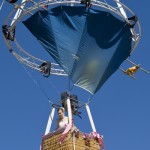On location: Rescue Special Ops
 The Nine Network’s new drama brings big stunts back to the small screen. Laine Lister joined the special ops in Sydney.
The Nine Network’s new drama brings big stunts back to the small screen. Laine Lister joined the special ops in Sydney.
Can we use your building? Cool, because we’re going to throw three people off the top, set it on fire, and say it might be unsafe,” laughs producer and writer Sarah Smith.
It’s one of many hair-raising stunts that she and her production partner Julie McGauran pitched to managers of potential sites to film their gritty new drama Rescue Special Ops (RSO).

